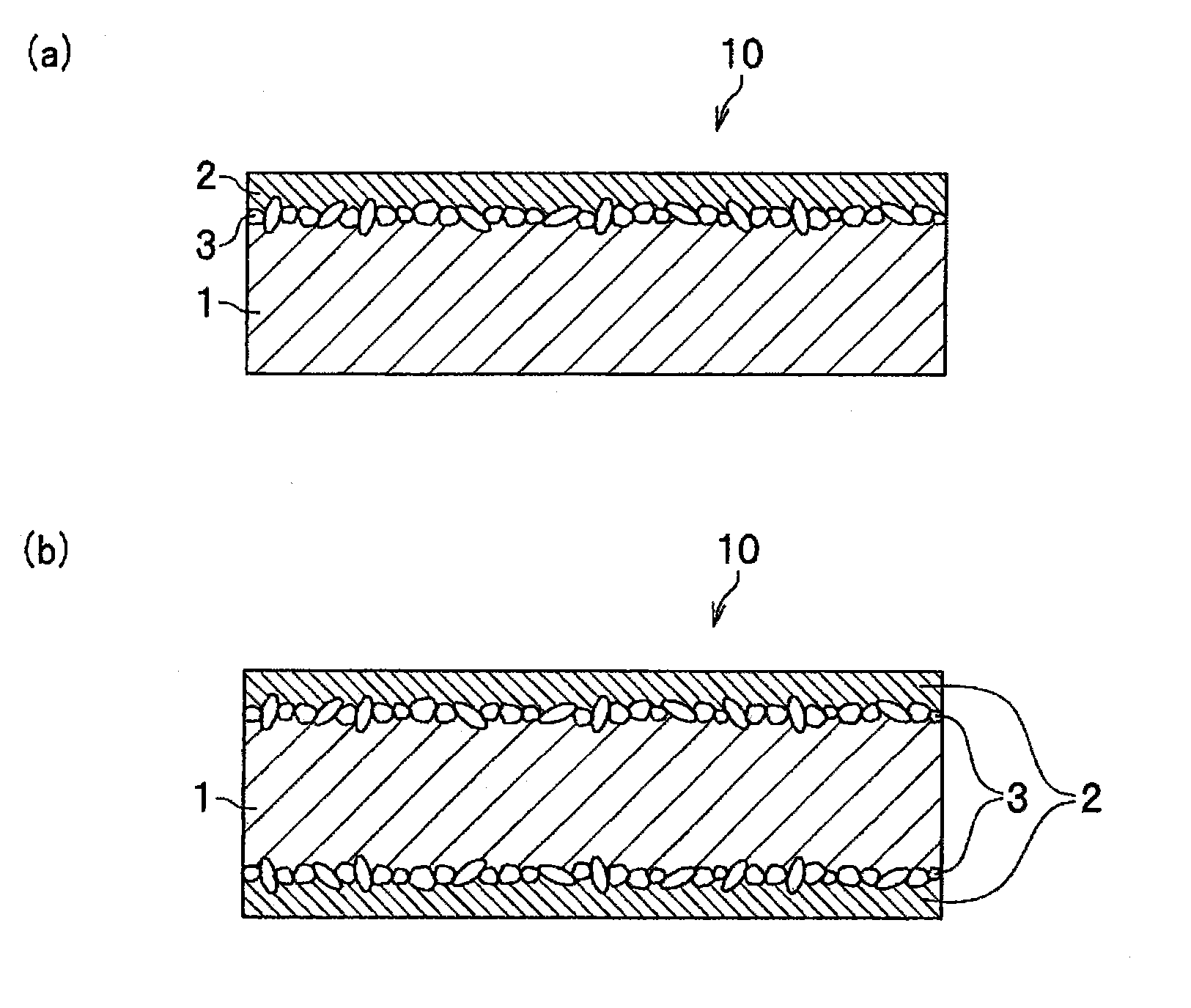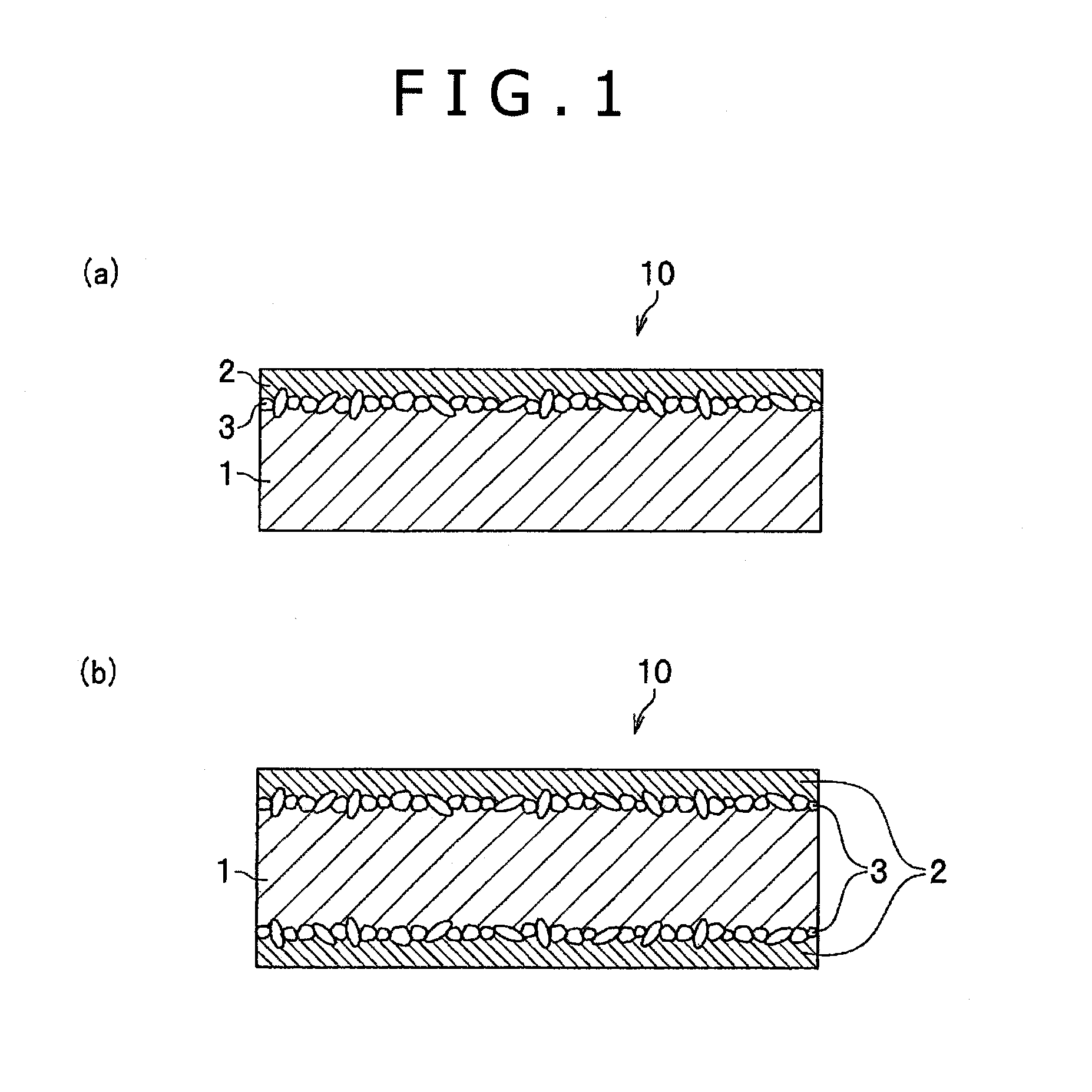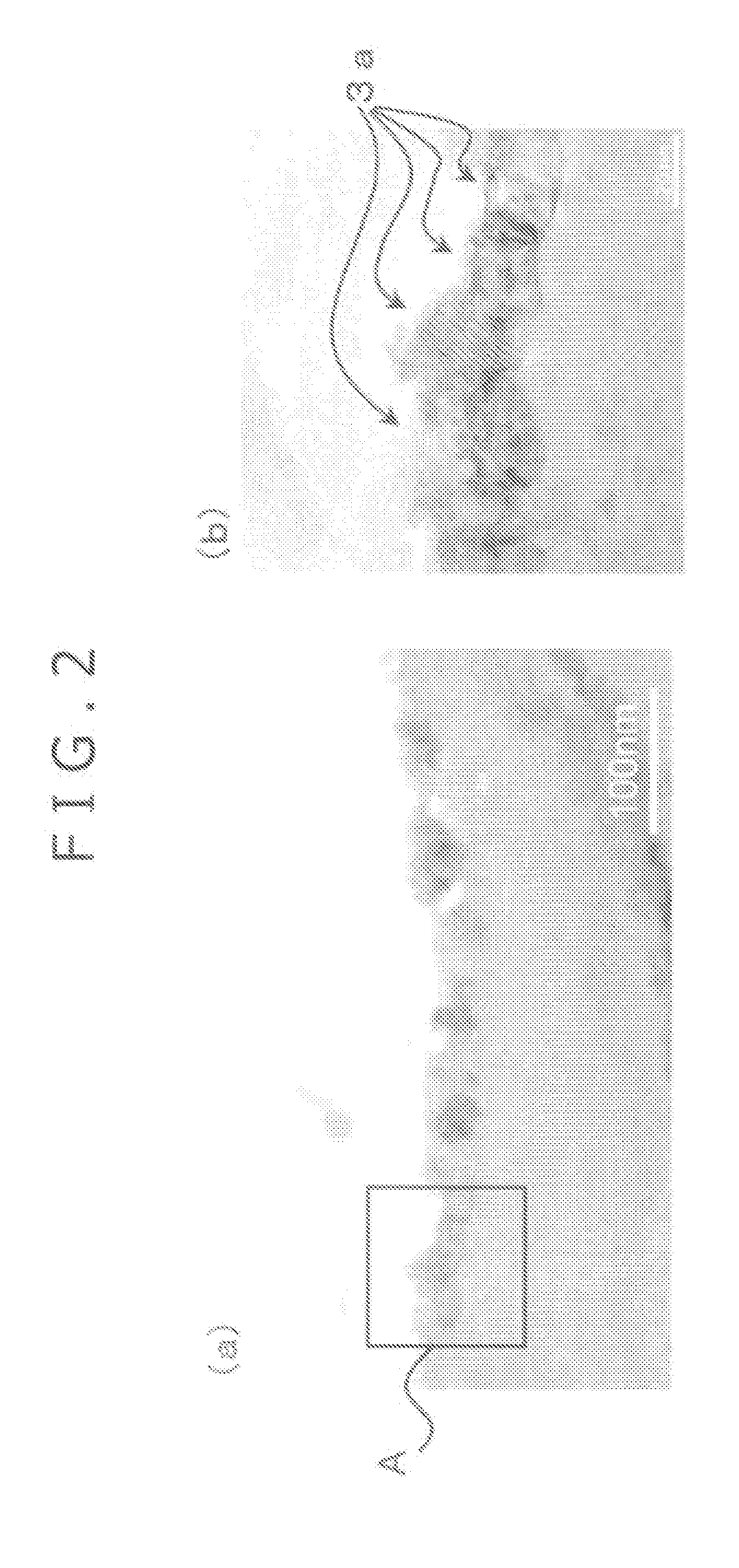Titanium fuel cell separator
a fuel cell separator and titanium technology, applied in the field of titanium fuel cell separators, can solve the problems of inferior strength and toughness of separation devices, high cost, and inability to meet the requirements of high-temperature separation, and achieve better conductivity, better durability, and higher adhesion.
- Summary
- Abstract
- Description
- Claims
- Application Information
AI Technical Summary
Benefits of technology
Problems solved by technology
Method used
Image
Examples
examples
[0067]The titanium fuel cell separator according to the present invention will be illustrated in detail below, with reference to examples satisfying conditions specified in the present invention, and comparative examples not satisfying the conditions.
[0068]Pure titanium of JIS Class 1, which had undergone annealed and picked finish, was used as a substrate. The pure titanium had a chemical composition including oxygen (O) in a content of 450 ppm, iron (Fe) in a content of 250 ppm, and nitrogen (N) in a content of 40 ppm and further including titanium and inevitable impurities. The titanium substrate had a thickness of 0.5 mm. A carbon powder having an average particle size of 10 μm and four-nines purity was used. The titanium substrate was obtained by subjecting a titanium material sequentially to a melting step, casting step, hot rolling step, and cold rolling step according to known procedures.
[0069]The carbon powder was dispersed to a predetermined concentrat...
PUM
| Property | Measurement | Unit |
|---|---|---|
| size | aaaaa | aaaaa |
| thickness | aaaaa | aaaaa |
| thickness | aaaaa | aaaaa |
Abstract
Description
Claims
Application Information
 Login to View More
Login to View More - R&D
- Intellectual Property
- Life Sciences
- Materials
- Tech Scout
- Unparalleled Data Quality
- Higher Quality Content
- 60% Fewer Hallucinations
Browse by: Latest US Patents, China's latest patents, Technical Efficacy Thesaurus, Application Domain, Technology Topic, Popular Technical Reports.
© 2025 PatSnap. All rights reserved.Legal|Privacy policy|Modern Slavery Act Transparency Statement|Sitemap|About US| Contact US: help@patsnap.com



